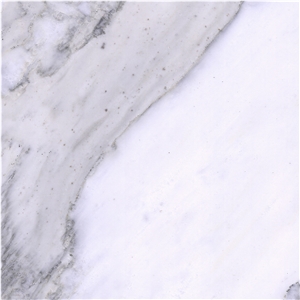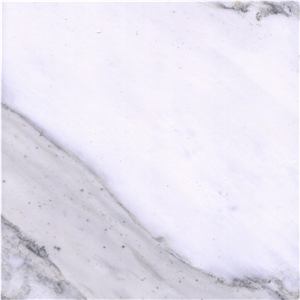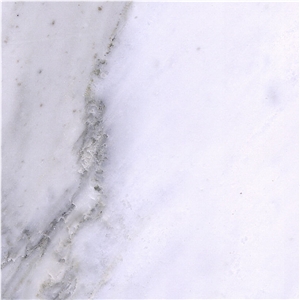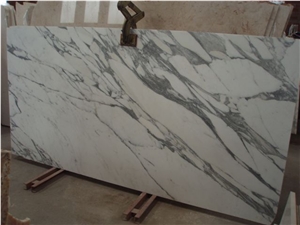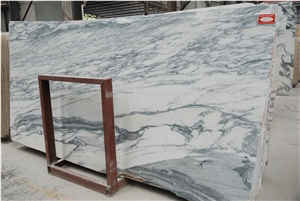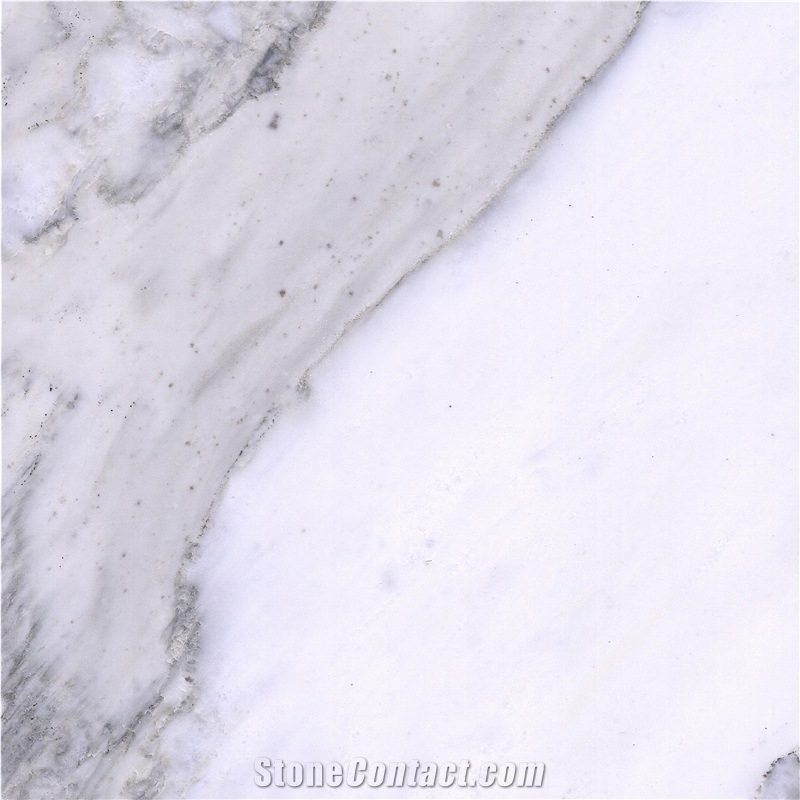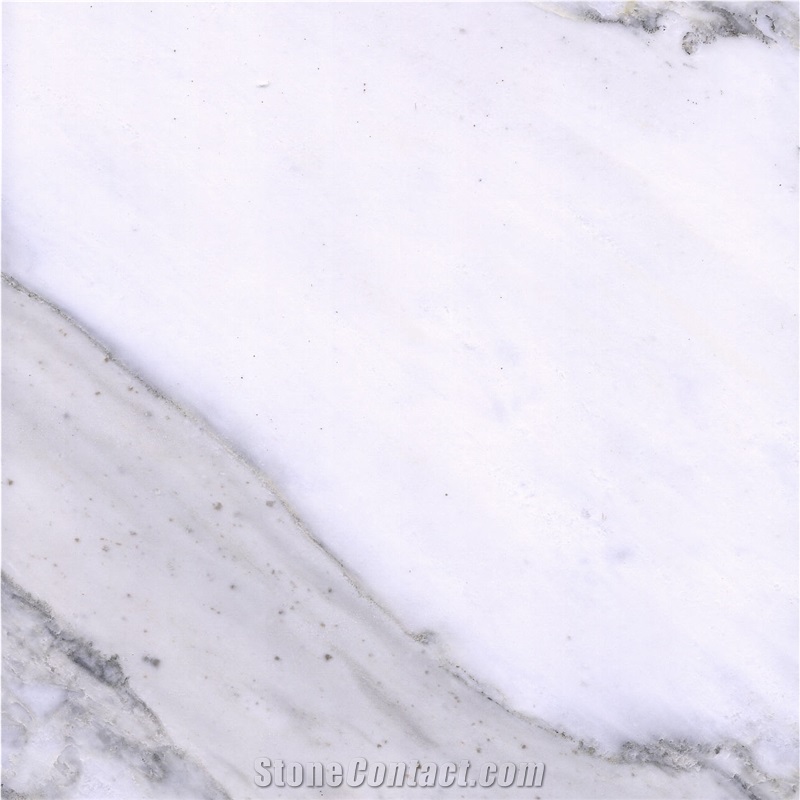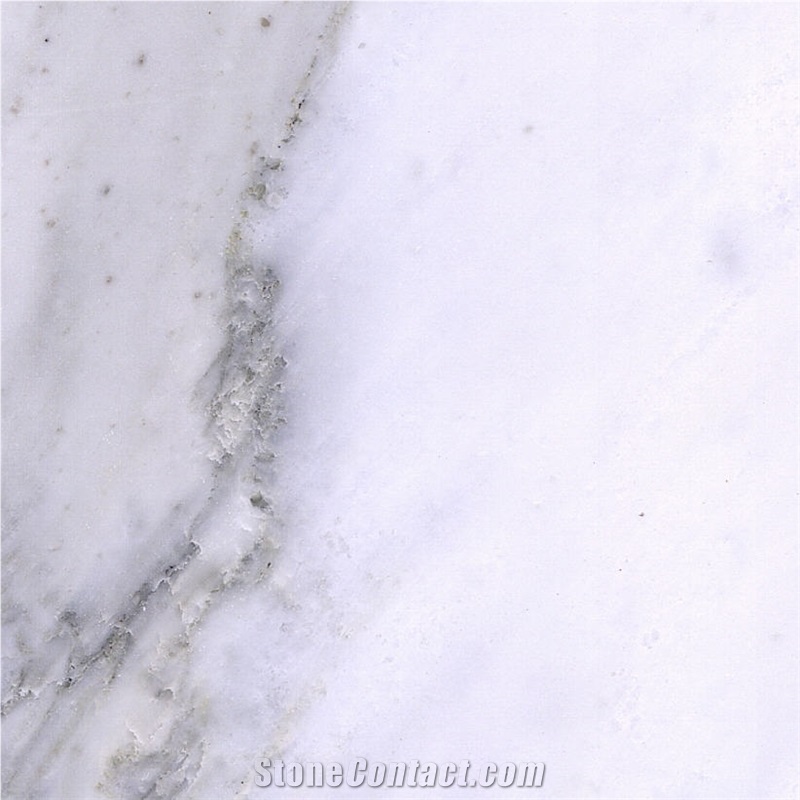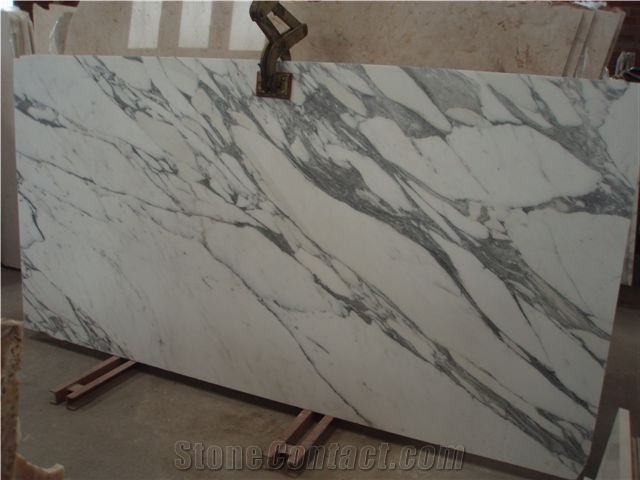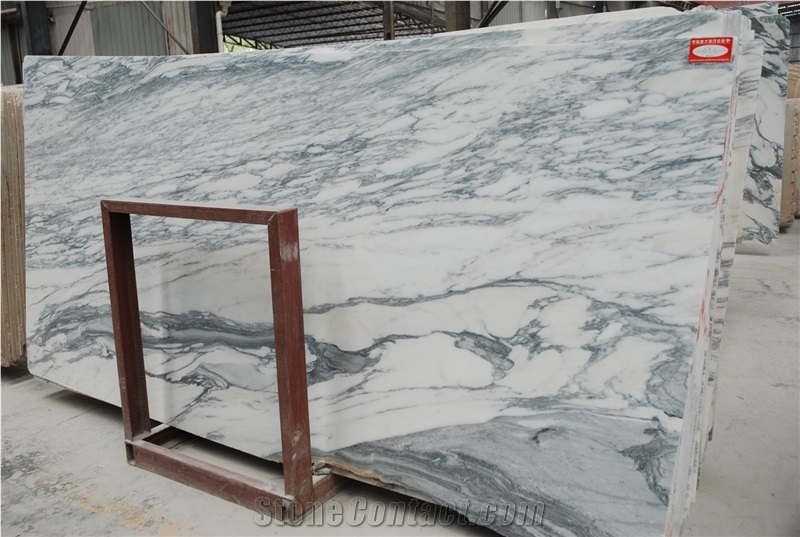Arabescato Venato Marble
 Italy
(Provincia di Lucca, Toscana)
Italy
(Provincia di Lucca, Toscana)
Arabescato Venato Marble is an exquisite and sought-after natural stone quarried in Italy. It is renowned for its stunning appearance and intricate veining patterns, making it a prized choice for various interior design applications.
The name "Arabescato Venato" comes from the Italian words "Arabescato," referring to its intricate, flowing patterns, and "Venato," which translates to "veined." This marble exhibits a beautiful combination of white or creamy background with captivating, dark gray or black veins that gracefully meander throughout the stone.
The veining patterns of Arabescato Venato Marble are reminiscent of elaborate and artistic arabesque designs, creating an aura of timeless elegance and sophistication. Each slab of this marble is a unique work of art, with no two pieces exactly alike, making it a favored choice for those seeking a statement piece for their interior design projects.
Arabescato Venato Marble is widely used for countertops, flooring, wall cladding, and decorative accents in both residential and commercial spaces. Its classic and refined appearance adds a touch of luxury and opulence to any environment, making it a prized addition to prestigious projects around the world.
Quarried in Italy, Arabescato Venato Marble reflects the country's rich history of marble craftsmanship and the mastery of the stone industry. Its breathtaking beauty and exquisite veining patterns have made it a timeless favorite among architects, designers, and homeowners alike, adding a touch of natural splendor and grandeur to any space it graces.

Can Arabescato Venato Marble be used as a mortar pestle?

Are there color variations of Italy's Arabescato Venato Marble?

How can I clean Arabescato Venato Marble floor tiles?

What thickness of Arabescato Venato Marble kitchen countertop would be better?

What is the coefficient of friction of Water Jet Cut Italy's Arabescato Venato Marble tiles?

Is Arabescato Venato Marble durable for use as outdoor patio pavers?

With Arabescato Venato Marble kitchen countertops, which color glass mosaic backsplash should I choose?

How thin can Arabescato Venato Marble be cut as tiles?

Can Arabescato Venato Marble be used in a Turkish hammam as a wall and floor covering?

Is Italy's Arabescato Venato Marble an expensive stone?

What is the chemical composition of Arabescato Venato Marble?

Can Arabescato Venato Marble be used as a kitchen cutting board?

How can I repair the scratched surface of the Arabescato Venato Marble wall tiles?

What thickness of Arabescato Venato Marble backsplash tiles would be better?

Can Italy's Arabescato Venato Marble be used in a dining room?

Can Italy's Arabescato Venato Marble be used exterior applications in very humid climates?

What is the physical properties of Arabescato Venato Marble?

Can Arabescato Venato Marble be used as a tabletop?

Is it safe to use Arabescato Venato Marble mortar and pestle?

What should be the minimum thickness of the Arabescato Venato Marble table top?

How thick is Italy's Arabescato Venato Marble slabs?

Does Arabescato Venato Marble scratch easily?

What grade is Italy's Arabescato Venato Marble?

Does Arabescato Venato Marble easly stain?

Can I use Arabescato Venato Marble for kitchen countertop?

How to repair the scratched Arabescato Venato Marble kitchen countertop surface?

With Arabescato Venato Marble kitchen countertops, which color kitchen cabinets should I choose?

Can Italy's Arabescato Venato Marble be used in landscaping?

What is the difference between Arabescato Venato Marble and Calacatta Extreme?

Can Arabescato Venato Marble be used for pool coping?

Can Italy's Arabescato Venato Marble be used outdoors?

Can I use Arabescato Venato Marble for commercial bar countertop?

What are the different types of Arabescato Venato Marble mosaics style?

How should I clean Arabescato Venato Marble countertop?

What are the different types of Arabescato Venato Marble columns?

What are the different types of Arabescato Venato Marble moldings style?
-

Goldtop ( Xiamen ) Imp. & Exp. Co., Ltd.
 China
China
 8YRDiamond members are premium members on platform, providing members with comprehensive approach to promoting their products, increasing products exposure and investment return to maximize.
8YRDiamond members are premium members on platform, providing members with comprehensive approach to promoting their products, increasing products exposure and investment return to maximize.
 Verified Supplier is for prove company authenticity,including business license,trade license and effective office space,to enhance buyers' trust to suppliers and their products, reducing communication costs.
Verified Supplier is for prove company authenticity,including business license,trade license and effective office space,to enhance buyers' trust to suppliers and their products, reducing communication costs.
Contact Supplier
-

XIAMEN HAORONG IMPORT & EXPORT CO., LTD.
 China
China
 14YRDiamond members are premium members on platform, providing members with comprehensive approach to promoting their products, increasing products exposure and investment return to maximize.
14YRDiamond members are premium members on platform, providing members with comprehensive approach to promoting their products, increasing products exposure and investment return to maximize.
 Verified Supplier is for prove company authenticity,including business license,trade license and effective office space,to enhance buyers' trust to suppliers and their products, reducing communication costs.
Verified Supplier is for prove company authenticity,including business license,trade license and effective office space,to enhance buyers' trust to suppliers and their products, reducing communication costs.
Contact Supplier
-

 China
China
 1YRDiamond members are premium members on platform, providing members with comprehensive approach to promoting their products, increasing products exposure and investment return to maximize.
1YRDiamond members are premium members on platform, providing members with comprehensive approach to promoting their products, increasing products exposure and investment return to maximize.
 Verified Supplier is for prove company authenticity,including business license,trade license and effective office space,to enhance buyers' trust to suppliers and their products, reducing communication costs.
Verified Supplier is for prove company authenticity,including business license,trade license and effective office space,to enhance buyers' trust to suppliers and their products, reducing communication costs.
Contact Supplier
-

Quanzhou First Impression Imp.&Exp. Trading Co.,Ltd.
 China
China
 Verified Supplier is for prove company authenticity,including business license,trade license and effective office space,to enhance buyers' trust to suppliers and their products, reducing communication costs.
Verified Supplier is for prove company authenticity,including business license,trade license and effective office space,to enhance buyers' trust to suppliers and their products, reducing communication costs.
Contact Supplier
-

 China
China
 1YRDiamond members are premium members on platform, providing members with comprehensive approach to promoting their products, increasing products exposure and investment return to maximize.
1YRDiamond members are premium members on platform, providing members with comprehensive approach to promoting their products, increasing products exposure and investment return to maximize.
 Verified Supplier is for prove company authenticity,including business license,trade license and effective office space,to enhance buyers' trust to suppliers and their products, reducing communication costs.
Verified Supplier is for prove company authenticity,including business license,trade license and effective office space,to enhance buyers' trust to suppliers and their products, reducing communication costs.
Contact Supplier
-

 China
China
 4YRDiamond members are premium members on platform, providing members with comprehensive approach to promoting their products, increasing products exposure and investment return to maximize.
4YRDiamond members are premium members on platform, providing members with comprehensive approach to promoting their products, increasing products exposure and investment return to maximize.
 Verified Supplier is for prove company authenticity,including business license,trade license and effective office space,to enhance buyers' trust to suppliers and their products, reducing communication costs.
Verified Supplier is for prove company authenticity,including business license,trade license and effective office space,to enhance buyers' trust to suppliers and their products, reducing communication costs.
Contact Supplier
-

 China
China
 4YRDiamond members are premium members on platform, providing members with comprehensive approach to promoting their products, increasing products exposure and investment return to maximize.
4YRDiamond members are premium members on platform, providing members with comprehensive approach to promoting their products, increasing products exposure and investment return to maximize.
 Verified Supplier is for prove company authenticity,including business license,trade license and effective office space,to enhance buyers' trust to suppliers and their products, reducing communication costs.
Verified Supplier is for prove company authenticity,including business license,trade license and effective office space,to enhance buyers' trust to suppliers and their products, reducing communication costs.
Contact Supplier
-

FUTURE BUILDING MATERIAL CO.,LIMITED
 China
China
 1YRDiamond members are premium members on platform, providing members with comprehensive approach to promoting their products, increasing products exposure and investment return to maximize.
1YRDiamond members are premium members on platform, providing members with comprehensive approach to promoting their products, increasing products exposure and investment return to maximize.
Contact Supplier
-

XIAMEN SHUNYUE BUILDING MATERIALS CO., LTD.
 China
China
 8YRDiamond members are premium members on platform, providing members with comprehensive approach to promoting their products, increasing products exposure and investment return to maximize.
8YRDiamond members are premium members on platform, providing members with comprehensive approach to promoting their products, increasing products exposure and investment return to maximize.
Contact Supplier
-

XIAMEN SHUNYUE BUILDING MATERIALS CO., LTD.
 China
China
 8YRDiamond members are premium members on platform, providing members with comprehensive approach to promoting their products, increasing products exposure and investment return to maximize.
8YRDiamond members are premium members on platform, providing members with comprehensive approach to promoting their products, increasing products exposure and investment return to maximize.
Contact Supplier
The request includes: 1. surface finished, size 2. quantity required






